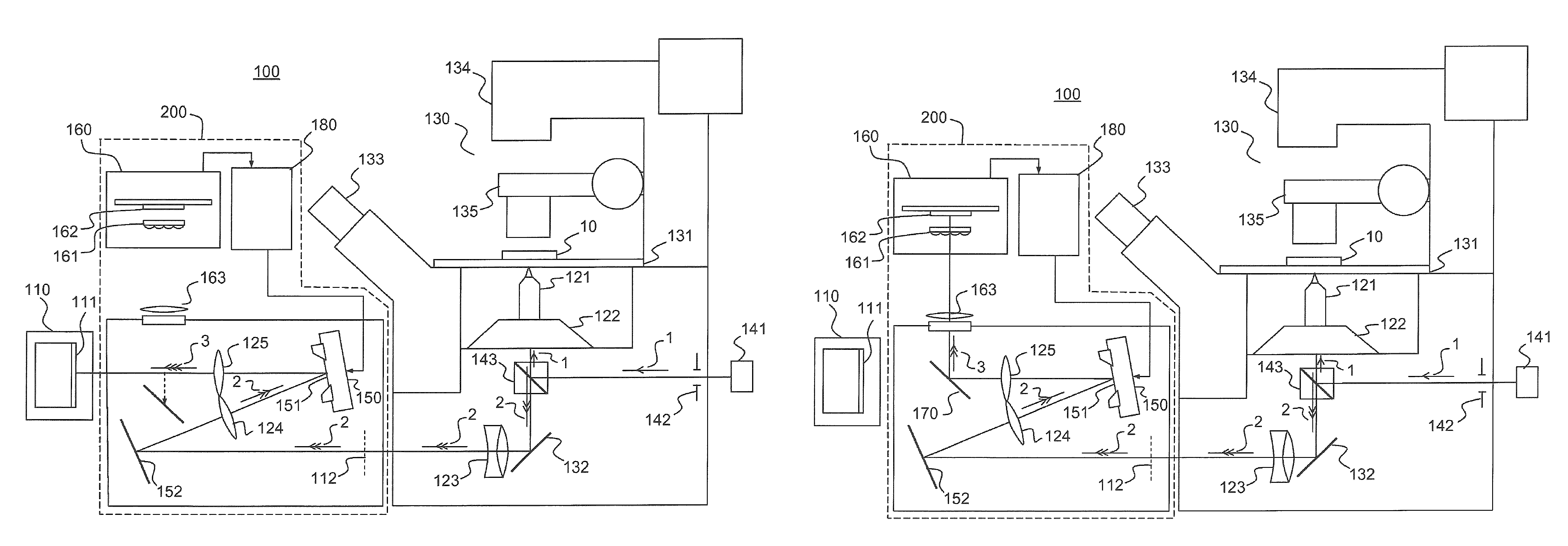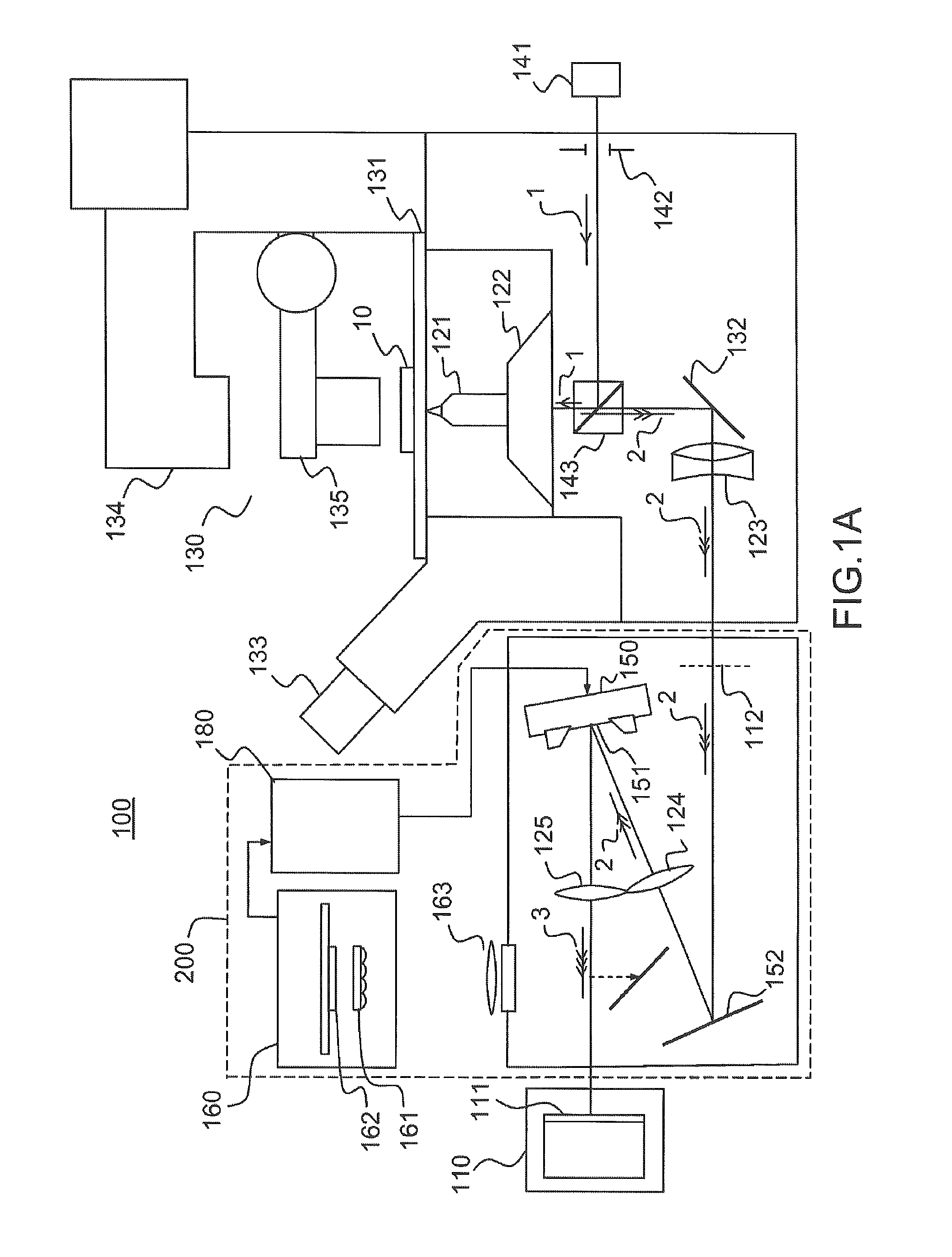Method and optical device for super-resolution localization of a particle
a particle and super-resolution technology, applied in the field of super-resolution microscopy methods and optical devices, can solve the problems of deteriorating algorithms, unable to make rapid adjustments, and both cylindrical-lens and biplane techniques
- Summary
- Abstract
- Description
- Claims
- Application Information
AI Technical Summary
Benefits of technology
Problems solved by technology
Method used
Image
Examples
Embodiment Construction
[0048]FIGS. 1A and 1B illustrate a device 100 for three-dimensional localization of one or more emitting particles according to one example of the invention.
[0049]The expression “emitting particle” is understood in the present description to mean any particle capable of emitting a light signal, either spontaneously or by activation, for example by way of a light source (photoactivation). The particles are, for example, reactive units or macromolecular complexes formed by proteins or assemblies of proteins, tagged, using known techniques, with a probe capable of emitting a light signal, for example a fluorescent probe. Average sizes typically range from a few nanometers for small complexes to about 100 nanometers for the largest structures. Most molecular complexes are between 10 and 30 nm in size. In any case, it is desired to localize emitting particles of smaller size than the diffraction limit of the optical system used to form an image thereof. The particles that it is desired t...
PUM
 Login to View More
Login to View More Abstract
Description
Claims
Application Information
 Login to View More
Login to View More - R&D
- Intellectual Property
- Life Sciences
- Materials
- Tech Scout
- Unparalleled Data Quality
- Higher Quality Content
- 60% Fewer Hallucinations
Browse by: Latest US Patents, China's latest patents, Technical Efficacy Thesaurus, Application Domain, Technology Topic, Popular Technical Reports.
© 2025 PatSnap. All rights reserved.Legal|Privacy policy|Modern Slavery Act Transparency Statement|Sitemap|About US| Contact US: help@patsnap.com



